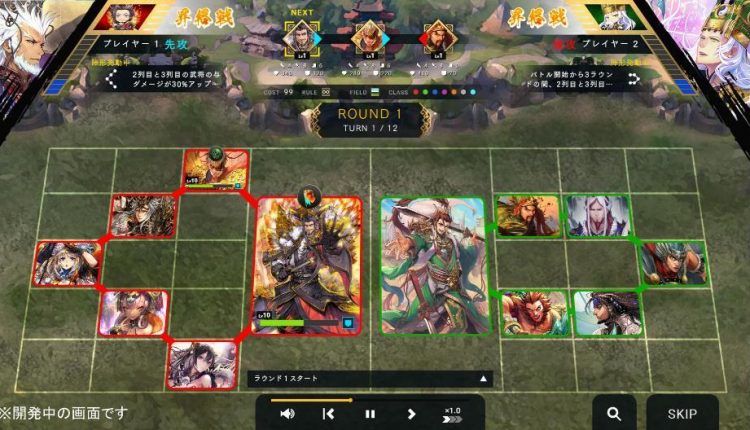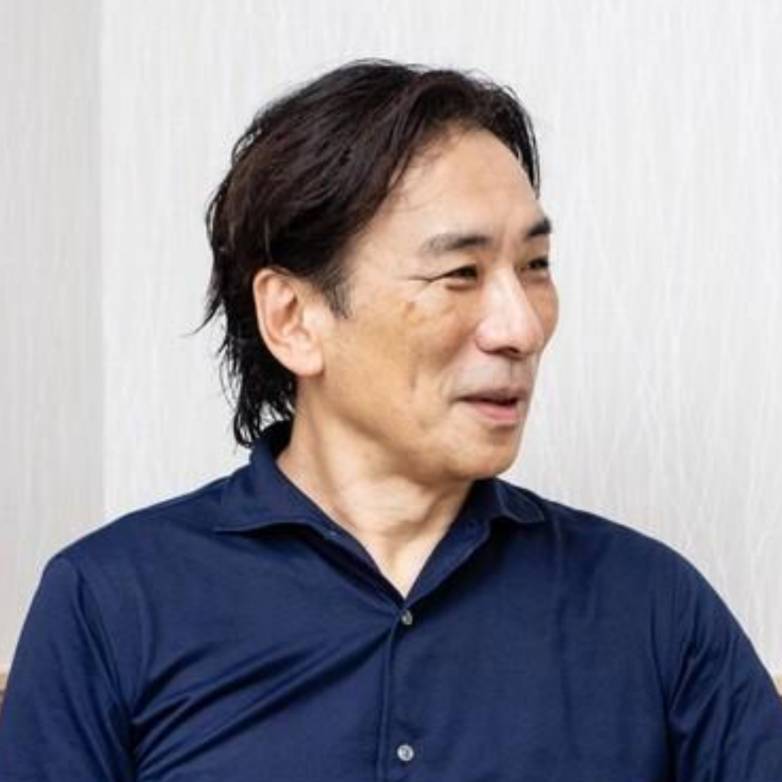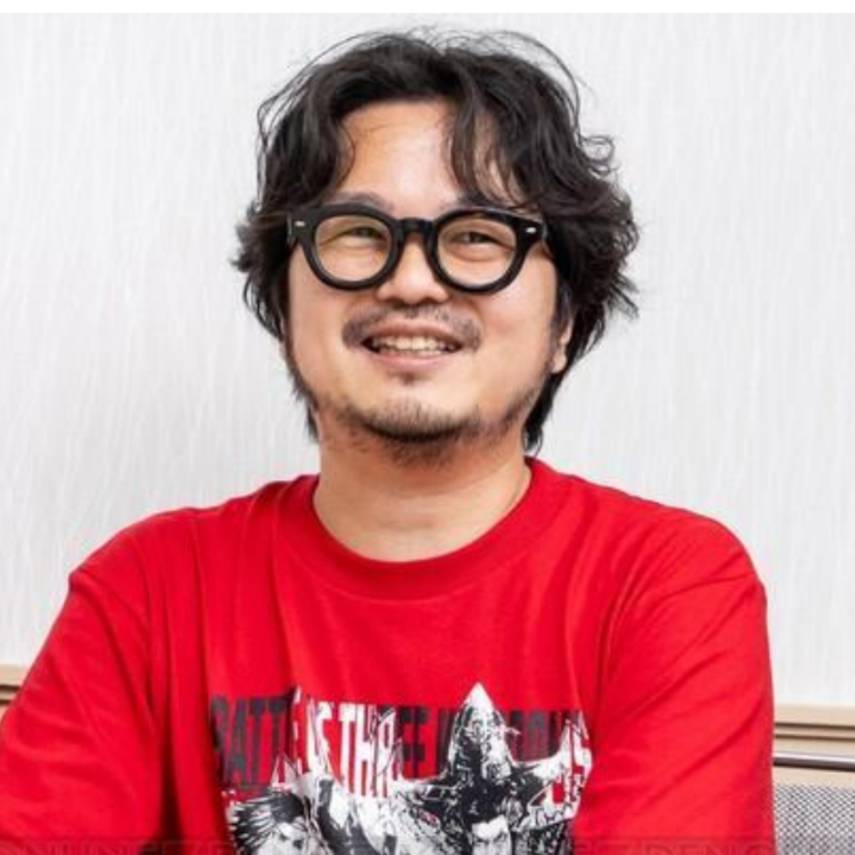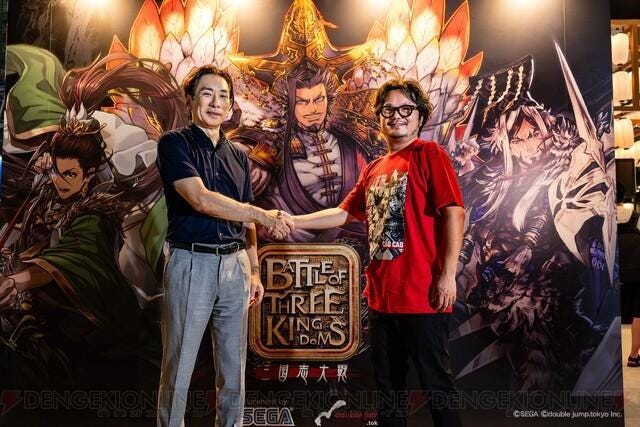How Sega and Double Jump revived Sangokushi Taisen through Battle of Three Kingdoms

Sign up to our Substack, follow us on Twitter, and connect with us on LinkedIn.
In this conversation, initiated by Double Jump.tokyo at Tokyo Game Show in September, Sega’s co-COO Shuji Utsumi and Double Jump.tokyo’s CEO Hironobu Ueno dive into the genesis of Battle of Three Kingdoms – Sangokushi Taisen.
Developed by Double Jump.tokyo, the title is a blockchain TCG harnessing Sega’s iconic IP Sangokushi Taisen. Apart from revealing new details abut the game, they discuss the present and future state of blockchain gaming and how to build a successful blockchain game.

With his experience from various entertainment industries, Utsumi is currently head of Sega’s game business and president of consumer game and transmedia.

Aside from working on Battle of Three Kingdoms, Ueno is also involved in the development of Shi-san-sei Million Arthur, an upcoming title with integrated NFTs.
Please share your experience with and memories of Three Kingdoms?
Ueno: I first encountered Three Kingdoms in the Japanese manga Sangokushi by the famous manga artist Mitsuteru Yokoyama. At the time, many people around me didn’t know much about world history but were familiar with the generals in Sangokushi. As for my favourite Sangokushi chapters, I like the ‘Sanko no Rei’ episode, in which Liu Bei, who was in his 40s and already well-known at the time, shows his gratitude to Zhuge Liang, a young man in his 20s. As the CEO of a company, I think there is much to learn from him.
Utsumi: Of course, I read novels and manga, but more uniquely, I found the Super Kabuki play Shin Sangokushi very entertaining. The play was visually stunning, and Zhuge Liang, played by Ichikawa Ennosuke IV, was an engaging character.
Ueno: I believe Three Kingdoms is once again a fantastic IP when you see it used in many different ways.
Utsumi: The dynamic ensemble drama, where friends become enemies, enemies gain one’s respect, and so forth, makes for a highly engaging story.
What are your perspectives on the current state and future of blockchain games?
Ueno: Currently, the world is exploring new ways to utilize emerging blockchain technologies in gaming. Users are finding it challenging to adapt to this technology, and as a result, I believe we are still in the early phases of user adoption.
While you can describe the advantages of this technology verbally, it can be challenging to persuade people solely through words. The real challenge lies in developing content that allows people to experience and grasp the benefits of integrating blockchain into games.
The real challenge lies in developing content that allows people to experience and grasp the benefits of integrating blockchain into games.
Hironobu Ueno
Utsumi: In the realm of gaming, I believe it’s crucial to adeptly capture and evolve with shifting human experiences as technology progresses. We are always in pursuit of discovering the specific and intriguing innovations we can bring to life. In the past, when social games emerged, elements like gacha systems were something console games didn’t have.
We think that this is a transitional period for NFT games, what do you think?
Utsumi: It would be fantastic if we could offer content that serves as an entry point, similar to the well-known puzzle games in the mobile gaming industry. The popularity of mobile games was shaped by the widespread availability of cell phones as infrastructure.
Now, in an era where most people own smartphones and computers, we should contemplate how to engage and appeal to individuals. Within blockchain games, owning assets and, in some cases, earning money, could become player wants that haven’t existed before. In this regard, this is indeed a transitional phase for the industry.
It seems that the hurdles for starting games, including those involving wallets, are lower than a few years ago.
Ueno: Indeed, that’s a valid point. We aim to ensure that the onboarding process is as smooth as possible. It could be challenging if more technical knowledge is needed when starting a game. Therefore, we want more content that enables users to learn about blockchain, NFTs, and wallets as they engage with the game.
Utsumi: Until now, the hurdle of getting users to set up wallets was high. It is a challenge to lower that hurdle.
Is the ability to play without a wallet a unique element of the game, or is this part of the strategy to lower the hurdle for users?
Utsumi: That is another threshold issue. It is difficult for users to create wallets, so we must get people to play the game first.

Ueno: It would be better to start with the ability to play for free, and if people like the game, they can buy NFTs or create a wallet.
Sangokushi Taisen is an arcade game that uses cards, and it was released as a trading card game in the past; so it can feel familiar to users as a blockchain game, right?
Ueno: Indeed, that’s correct. When blockchain and NFTs are integrated into games, one of the most apparent applications is within trading card games. In some cases, trading card games now have more collectors than players. The value of a card is measured only when it is priced on the secondary market. One of the exciting aspects of NFTs is that we are trying to bring this concept to the digital world.
Utsumi: I’m looking forward to seeing how NFTs can authentically capture the feeling of owning a card.
What was the development process?
Utsumi: Sega has been focusing on researching content that utilizes advanced technology and new business models, and blockchain technology was one of those areas. Amidst this context, we decided to consider Sangokushi Taisen as an IP that would be accepted by fans in Japan and other Asian countries and would harmonize effectively with blockchain technology.
We will be able to share the core of the Sangokushi Taisen IP with double jump.tokyo, and at the same time, Sega will be able to learn about blockchain games, which should benefit us both.
Shuji Utsumi
Ueno: The business model for blockchain games has not yet been fully established, and to a certain extent, we are still trying to venture into this field. Through experimentation and learning from our mistakes, this project took shape as the ideal blockchain game that Double Jump.tokyo had in mind when we borrowed the significant IP Sangokushi Taisen. I would be very happy if this project could have a positive impact on my company, Sega, and the gaming industry as a whole.
How are the cards valuable?
Ueno: Yes, that’s correct. The value of a card fluctuates depending on its performance in the game and the quality of its artwork for collectors. Especially in terms of gameplay, it can be influenced by the environment, similar to a traditional trading card game in the real world.
Are there differences in the type of card and illustrations?
Ueno: There will be cards with the same performance but slightly different rarity.
How many cards will be available at the time of the game’s release?
Ueno: We are thinking of more than 100 different types. Of that number, there will be about 10 types of cards that can be newly drawn.
How often do you plan to update the game after its release?
Ueno: We are considering having frequent updates. Instead of making updates that significantly impact the gameplay experience, we aim to change things like expressions, effects, and more, while closely observing user feedback.
How does the battle system work?
Ueno: The battles are automated, but players must strategize within the confines of the battle rules and construct a deck within a 3-minute timeframe. The game prominently features simulation elements, emphasizing finding the most effective deck combinations.
In recent years, the time spent on each battle has been getting shorter and shorter, so we set the time limit to 3 minutes to capture the essence of a battle that can be enjoyed during short commute times.
What are your post-release expansion plans?
Ueno: We are thinking of marketing the game in such a way that we can expand it to the Asian region. Blockchain technology is already starting to spread in Asia, so we would like to focus on that.
What kind of support is being provided by Sega to Double Jump.tokyo?
Utsumi: We provide game assets and have assigned the actual producer of Sangokushi Taisen to supervise the game. We will be able to share the core of the Sangokushi Taisen IP with Double Jump.tokyo, and at the same time, Sega will be able to learn about blockchain games, which should benefit us both. We believe this will be a win-win situation for both parties.
I believe that this is an opportunity to revive the Sangokushi Taisen IP. Blockchain gaming is still an unknown world for us, so we want to protect what needs to be protected and take a new look at what needs to be captured in a new way. We look forward to collaborating with Double Jump.tokyo, fostering open and candid exchanges of ideas and opinions.
Find out more about Battle of Three Kingdoms – Sangokushi Taisen via its website.
